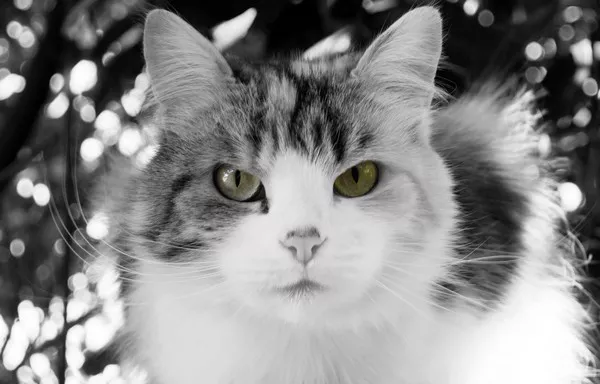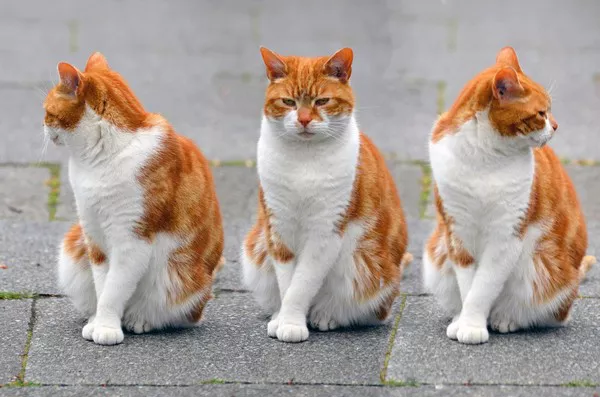Bringing a cat into your home is a rewarding experience that brings companionship, joy, and a unique personality into your life. However, it also comes with financial responsibilities that every prospective cat owner should understand. This comprehensive guide explores the various costs associated with keeping a cat, including initial expenses, ongoing care, health considerations, and potential unexpected costs. By understanding these financial commitments, you can better prepare for the responsibilities of cat ownership and ensure a happy, healthy life for your feline friend.
Initial Costs of Getting a Cat
Adoption Fees
The first expense you’ll encounter when bringing a cat into your home is the adoption fee. This fee can vary widely based on several factors:
Shelter or Rescue Organization: Adoption fees at shelters or rescue organizations typically range from $50 to $150. These fees often cover vaccinations, spaying or neutering, and sometimes even microchipping.
Breeders: If you choose to adopt from a breeder, costs can be significantly higher, ranging from $500 to over $3,000, depending on the breed’s rarity and pedigree. Purebred cats, especially those from reputable breeders, often come with a higher price tag.
Local Regulations: Some areas may have additional fees or taxes associated with pet adoption, which can also affect the overall cost.
Initial Supplies
Once you’ve adopted a cat, you’ll need to purchase essential supplies to ensure your new pet is comfortable and well-cared for. These initial supplies typically include:
Litter Box and Litter: A litter box costs between $15 and $50, while litter can range from $10 to $30 per month, depending on the type and brand.
Food and Water Bowls: Basic food and water bowls can cost anywhere from $10 to $30. Consider investing in higher-quality, stainless steel or ceramic options for durability and hygiene.
Cat Food: The cost of cat food varies significantly based on the brand and type (dry, wet, or raw). Expect to spend between $20 and $60 per month on food, with premium brands costing more.
Cat Bed: A comfortable cat bed can range from $20 to $100, depending on the quality and design.
Scratching Post and Toys: Scratching posts are essential for your cat’s well-being and can cost between $15 and $100. Toys can vary in price, but budgeting around $10 to $30 for initial toys is reasonable.
Grooming Supplies: Depending on your cat’s coat type, you may need grooming tools such as brushes or nail clippers, which can cost between $10 and $50.
Initial Veterinary Costs
Before bringing your cat home, it’s crucial to ensure they are healthy. Initial veterinary costs can include:
Vaccinations: Kittens typically require several vaccinations in their first year, costing between $50 and $100. Adult cats may need booster shots, which can also range from $50 to $100.
Spaying or Neutering: If your cat hasn’t been spayed or neutered, this procedure can cost between $50 and $300, depending on your location and the veterinarian.
Microchipping: Microchipping is a one-time cost that typically ranges from $25 to $50 and can be invaluable in reuniting lost pets with their owners.
Initial Health Checkup: A wellness exam for your new cat can cost between $50 and $100, ensuring they are healthy and free of parasites.
Summary of Initial Costs
In summary, the initial costs of adopting a cat can range from approximately $200 to $3,000 or more, depending on where you adopt, the supplies you purchase, and initial veterinary care. It’s essential to budget for these costs to ensure a smooth transition for both you and your new feline friend.
Ongoing Costs of Cat Ownership
Once you’ve welcomed your cat into your home, ongoing expenses will become part of your monthly budget. Understanding these costs will help you plan for the financial commitment of cat ownership.
Food Costs
Feeding your cat is one of the most significant ongoing expenses. The cost of cat food can vary based on the quality and type:
Dry Food: A bag of dry cat food typically costs between $20 and $60 and can last a month or longer, depending on your cat’s size and appetite.
Wet Food: Canned cat food generally costs between $1 and $3 per can. If you feed your cat exclusively wet food, you might spend $40 to $100 per month.
Special Diets: If your cat requires a special diet due to health issues, costs can increase significantly. Prescription diets can range from $50 to $100 or more per month.
Litter Costs
Litter is another recurring expense. The type of litter you choose can affect your overall costs:
Clay Litter: Traditional clay litter is typically the most affordable option, costing around $10 to $20 per month.
Clumping Litter: Clumping litters often cost a bit more but can be more convenient. Expect to pay $15 to $30 per month.
Natural or Alternative Litter: These eco-friendly options can range from $20 to $50 per month.
Routine Veterinary Care
Regular veterinary check-ups are essential for maintaining your cat’s health. Routine veterinary costs can include:
Annual Wellness Exams: A yearly check-up typically costs between $50 and $100. This exam may include vaccinations and a general health assessment.
Preventive Medications: Flea, tick, and heartworm prevention can cost between $10 and $30 per month, depending on the products you choose.
Dental Care: Dental cleanings and treatments can range from $100 to $300 annually, depending on your cat’s dental health.
Pet Insurance
Pet insurance can help mitigate unexpected veterinary costs. Monthly premiums for cat insurance typically range from $15 to $50, depending on the coverage level and the cat’s age and health. It’s essential to read the policy carefully to understand what is covered and any exclusions.
Grooming Costs
Depending on your cat’s breed and grooming needs, you may need to budget for grooming costs:
Professional Grooming: Professional grooming can cost between $30 and $100 per session, depending on the services provided.
At-Home Grooming Supplies: If you choose to groom your cat at home, you may need to invest in grooming tools, which can range from $10 to $50.
Miscellaneous Expenses
Other ongoing costs to consider include:
Toys and Enrichment: Regularly purchasing toys and enrichment items can cost around $10 to $30 per month.
Cat Sitters or Boarding: If you travel and need someone to care for your cat, expect to pay $15 to $50 per visit for a pet sitter or $20 to $100 per day for boarding.
Replacement Supplies: Over time, you may need to replace items like scratching posts, litter boxes, or beds. Budgeting $50 to $100 annually for replacements is wise.
Summary of Ongoing Costs
In total, ongoing costs for keeping a cat can range from $50 to $300 or more per month, depending on factors like food choices, veterinary care, and additional expenses. Understanding these costs will help you prepare for the financial commitment of cat ownership.
Unexpected Costs of Cat Ownership
While you can plan for many expenses associated with cat ownership, unexpected costs can arise. Preparing for these potential expenses can help you avoid financial strain.
Emergency Veterinary Care
Accidents and illnesses can happen unexpectedly, leading to emergency veterinary visits. Emergency care can be costly, with visits ranging from $100 to $1,000 or more, depending on the severity of the issue. Having a pet insurance policy can help alleviate some of these costs.
Chronic Health Issues
As cats age, they may develop chronic health issues that require ongoing treatment. Conditions such as diabetes, kidney disease, or hyperthyroidism can lead to significant veterinary expenses. Monthly costs for managing these conditions can range from $50 to several hundred dollars, depending on the treatment required.
Behavioral Issues
Some cats may develop behavioral issues that require professional intervention. Consulting with a veterinary behaviorist or trainer can cost between $100 and $300 for an initial consultation, with additional costs for follow-up sessions.
Pet Loss and End-of-Life Costs
The emotional toll of losing a pet is profound, and the associated costs can also be significant. End-of-life care, euthanasia, and cremation or burial services can range from $100 to $500 or more, depending on the services chosen.
Cost-Saving Tips for Cat Owners
While the costs of keeping a cat can add up, there are several strategies to help manage expenses without compromising your cat’s care.
Budgeting and Planning
Creating a budget for your cat’s expenses can help you track costs and plan for future needs. Consider using a spreadsheet or budgeting app to keep track of ongoing expenses and set aside funds for unexpected costs.
Buy in Bulk
Purchasing cat food, litter, and supplies in bulk can lead to significant savings over time. Look for sales or discounts at local pet stores or online retailers.
DIY Grooming
If you’re comfortable grooming your cat at home, investing in grooming tools can save you money on professional grooming services. Regular brushing can help reduce shedding and matting, improving your cat’s coat health.
Utilize Pet Insurance
Investing in pet insurance can help mitigate the financial burden of unexpected veterinary expenses. Compare different policies to find one that fits your budget and coverage needs.
Regular Preventive Care
Investing in regular veterinary check-ups and preventive care can help catch health issues early, potentially saving you money on more extensive treatments later.
Use Community Resources
Many communities offer low-cost veterinary clinics or spay/neuter programs. Research local resources to take advantage of affordable care options.
Conclusion
Owning a cat is a fulfilling and enriching experience, but it comes with financial responsibilities that every prospective cat owner should understand. From initial adoption costs to ongoing expenses for food, veterinary care, and supplies, the financial commitment of cat ownership can range from a few hundred to several thousand dollars annually.
By planning for these costs and being aware of potential unexpected expenses, you can ensure that you are financially prepared for the joys of cat ownership. Ultimately, the love and companionship that a cat brings into your life are well worth the investment, creating a bond that lasts a lifetime. With proper planning and care, you can provide your feline friend with a happy and healthy life while enjoying the many rewards of being a cat owner.
Related topic:



























